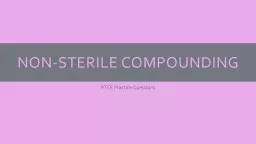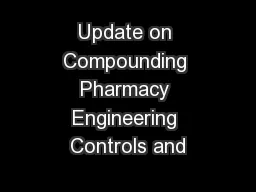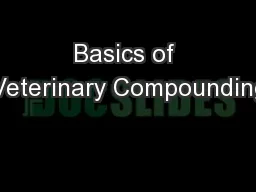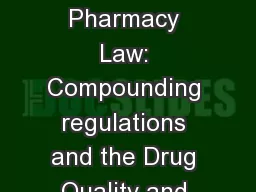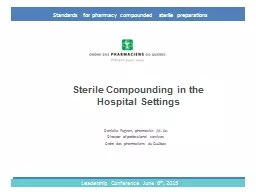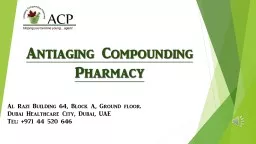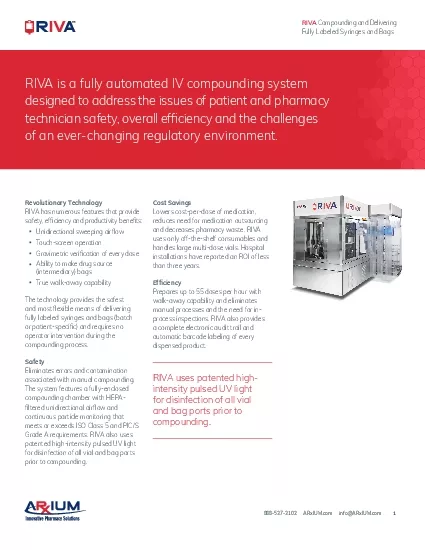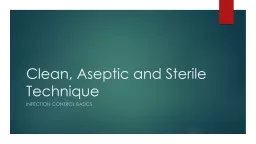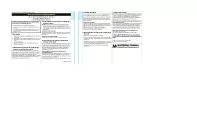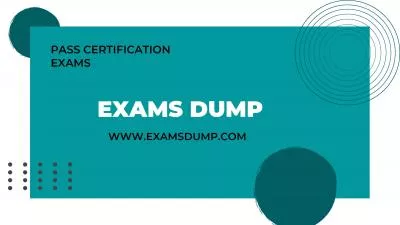PPT-Non-sterile compounding PTCE Practice Questions
Author : ellena-manuel | Published Date : 2018-11-22
Question 1 Which of the following establishes standards of quality strength purity packaging and labeling for compounded medications USPNF FDA ASHP DEA Question
Presentation Embed Code
Download Presentation
Download Presentation The PPT/PDF document "Non-sterile compounding PTCE Practice Qu..." is the property of its rightful owner. Permission is granted to download and print the materials on this website for personal, non-commercial use only, and to display it on your personal computer provided you do not modify the materials and that you retain all copyright notices contained in the materials. By downloading content from our website, you accept the terms of this agreement.
Non-sterile compounding PTCE Practice Questions: Transcript
Download Rules Of Document
"Non-sterile compounding PTCE Practice Questions"The content belongs to its owner. You may download and print it for personal use, without modification, and keep all copyright notices. By downloading, you agree to these terms.
Related Documents

